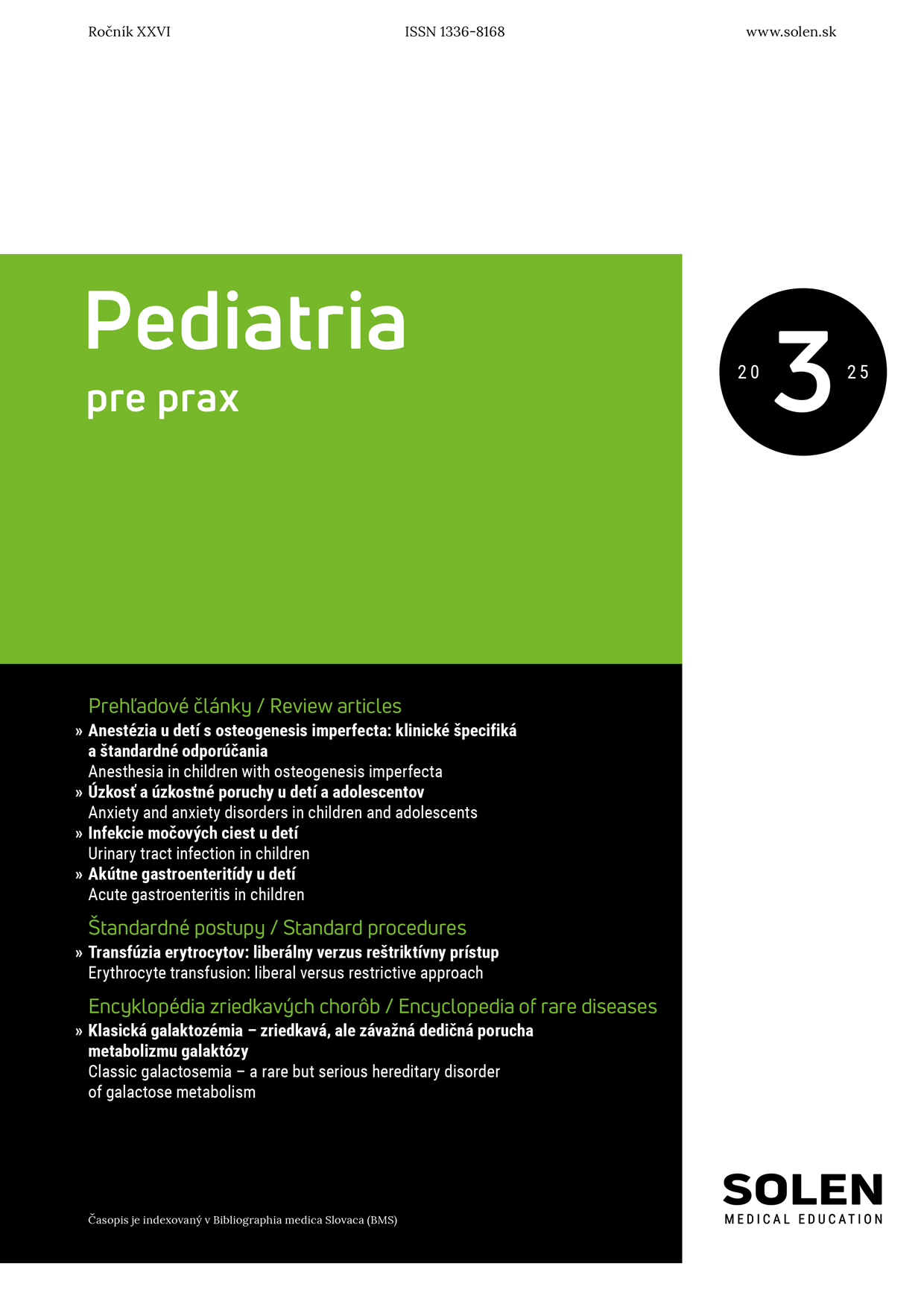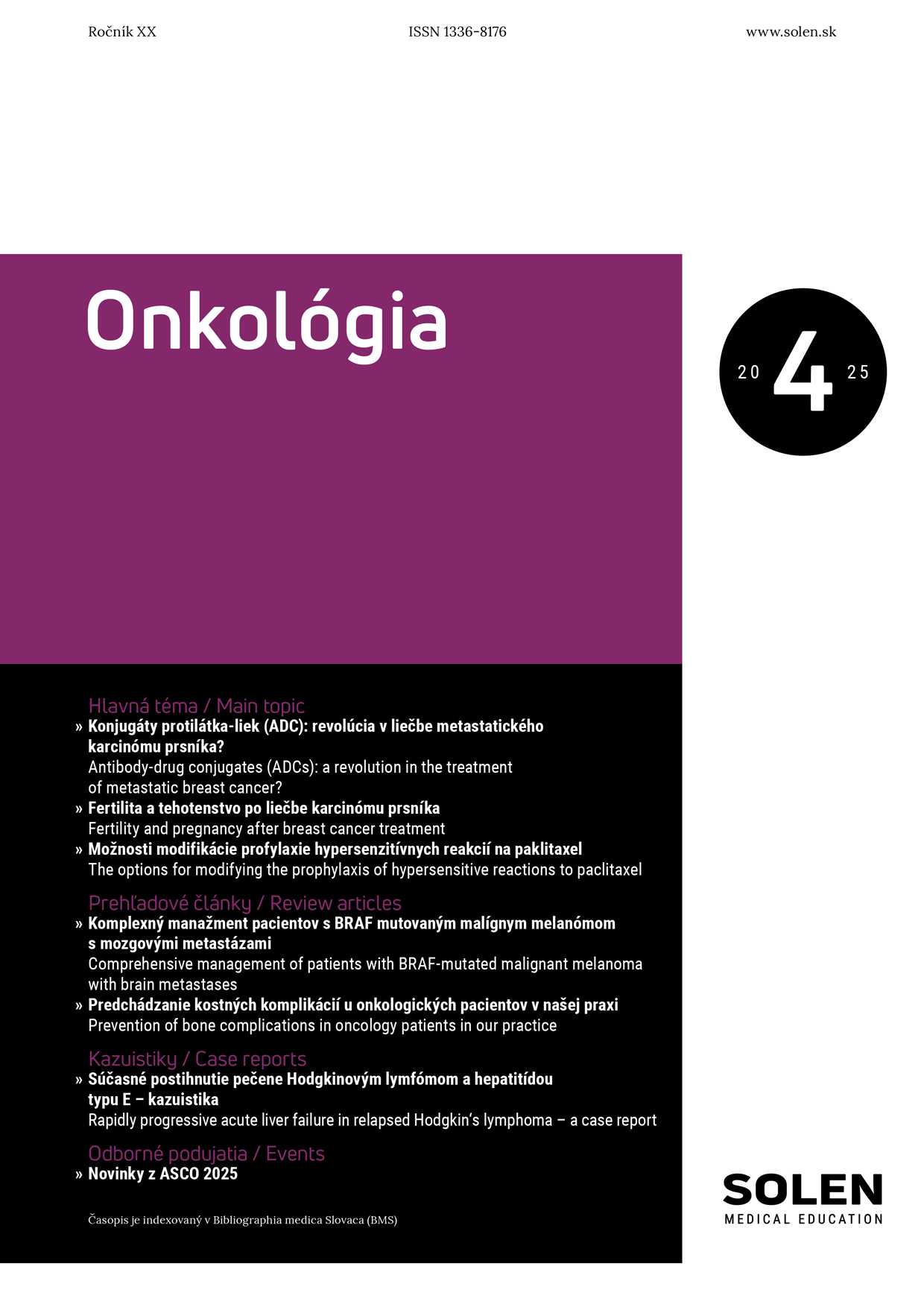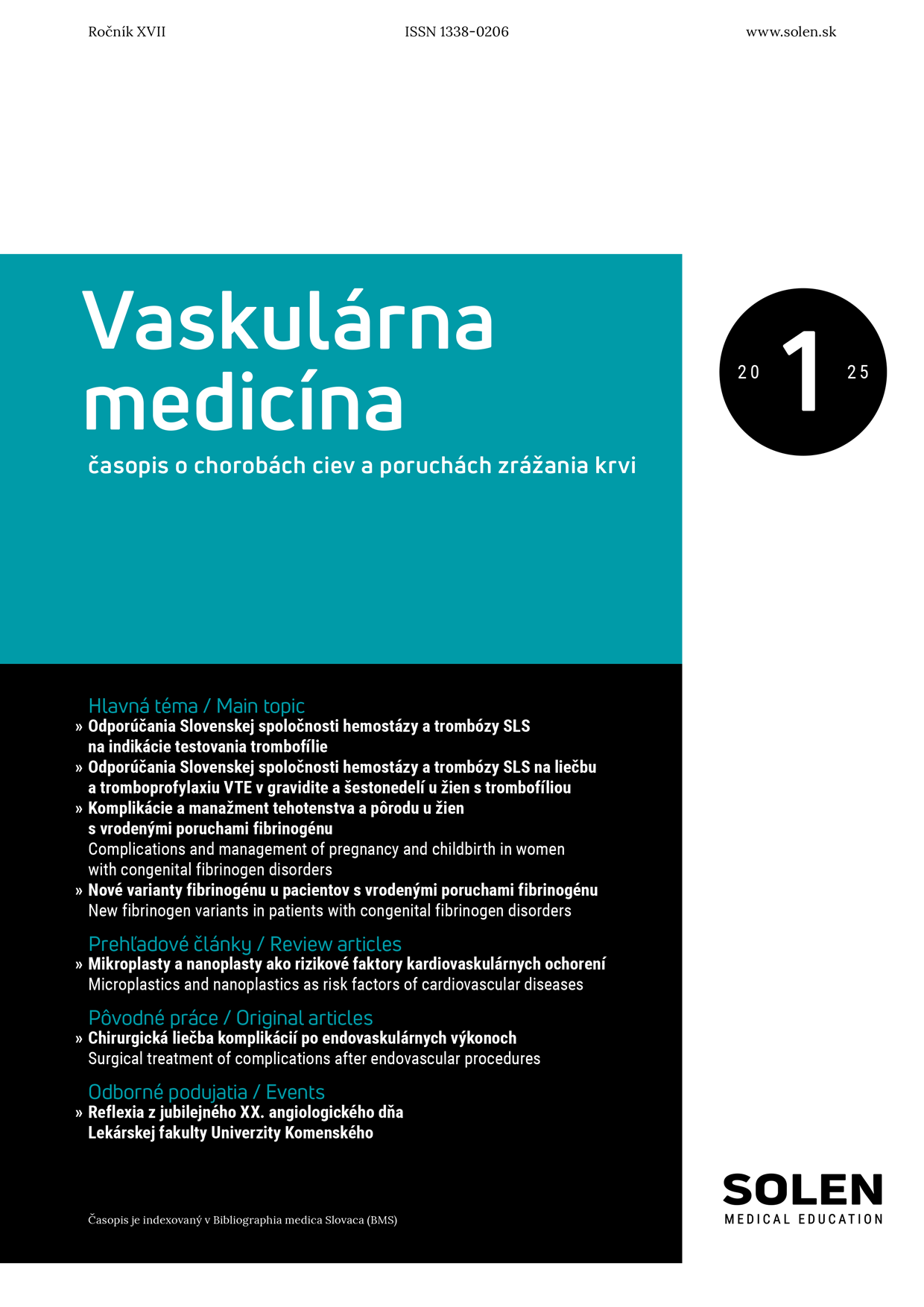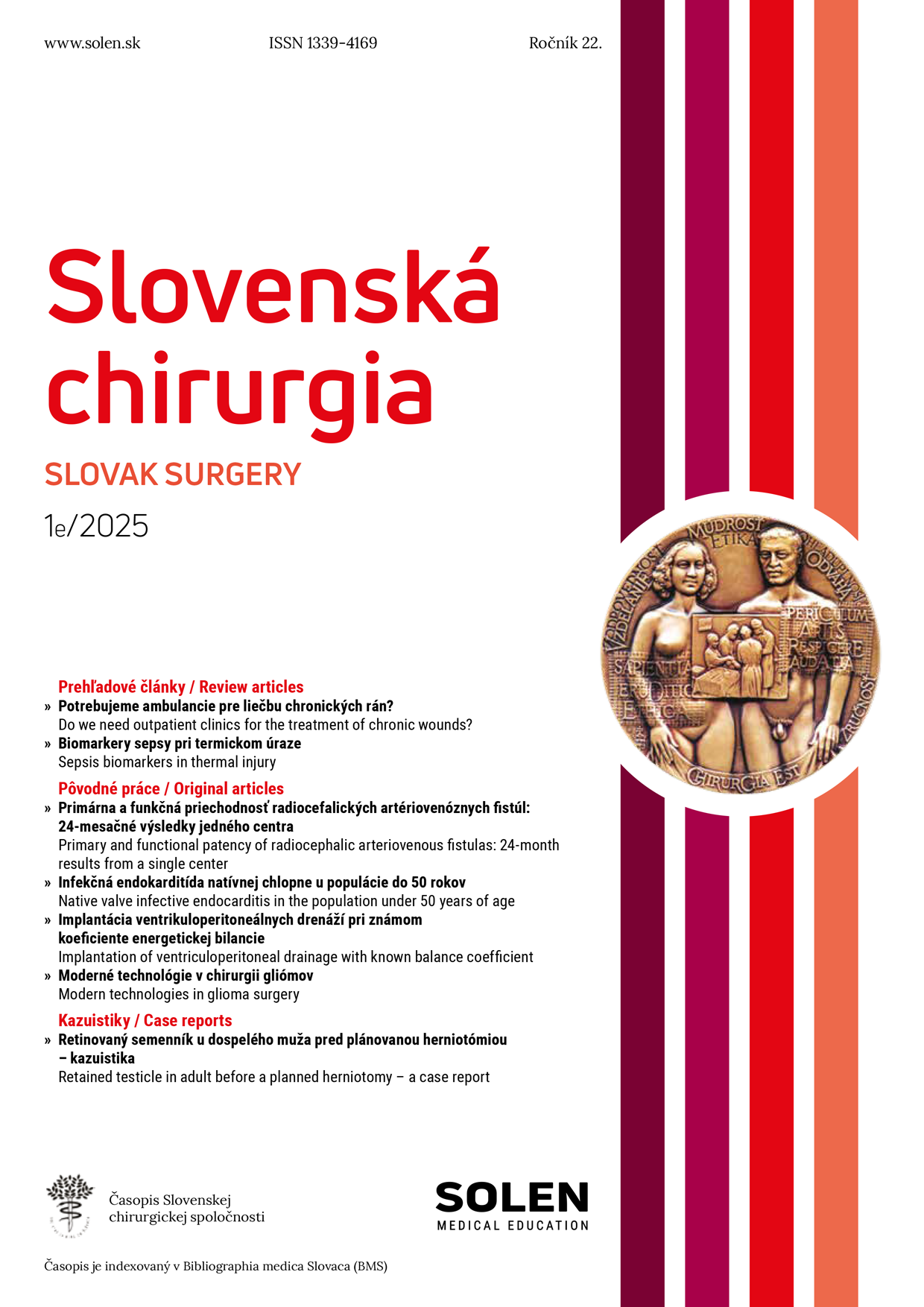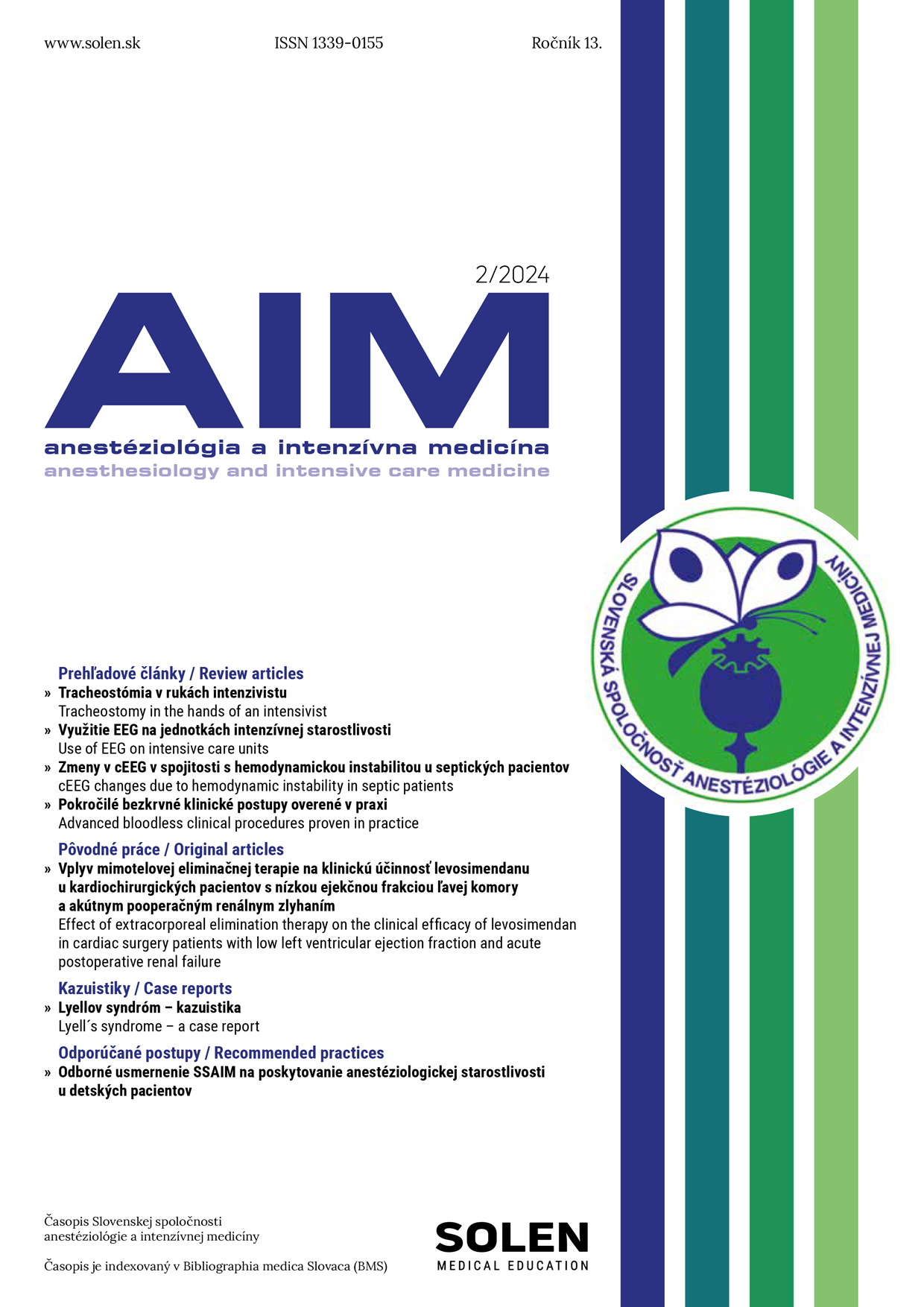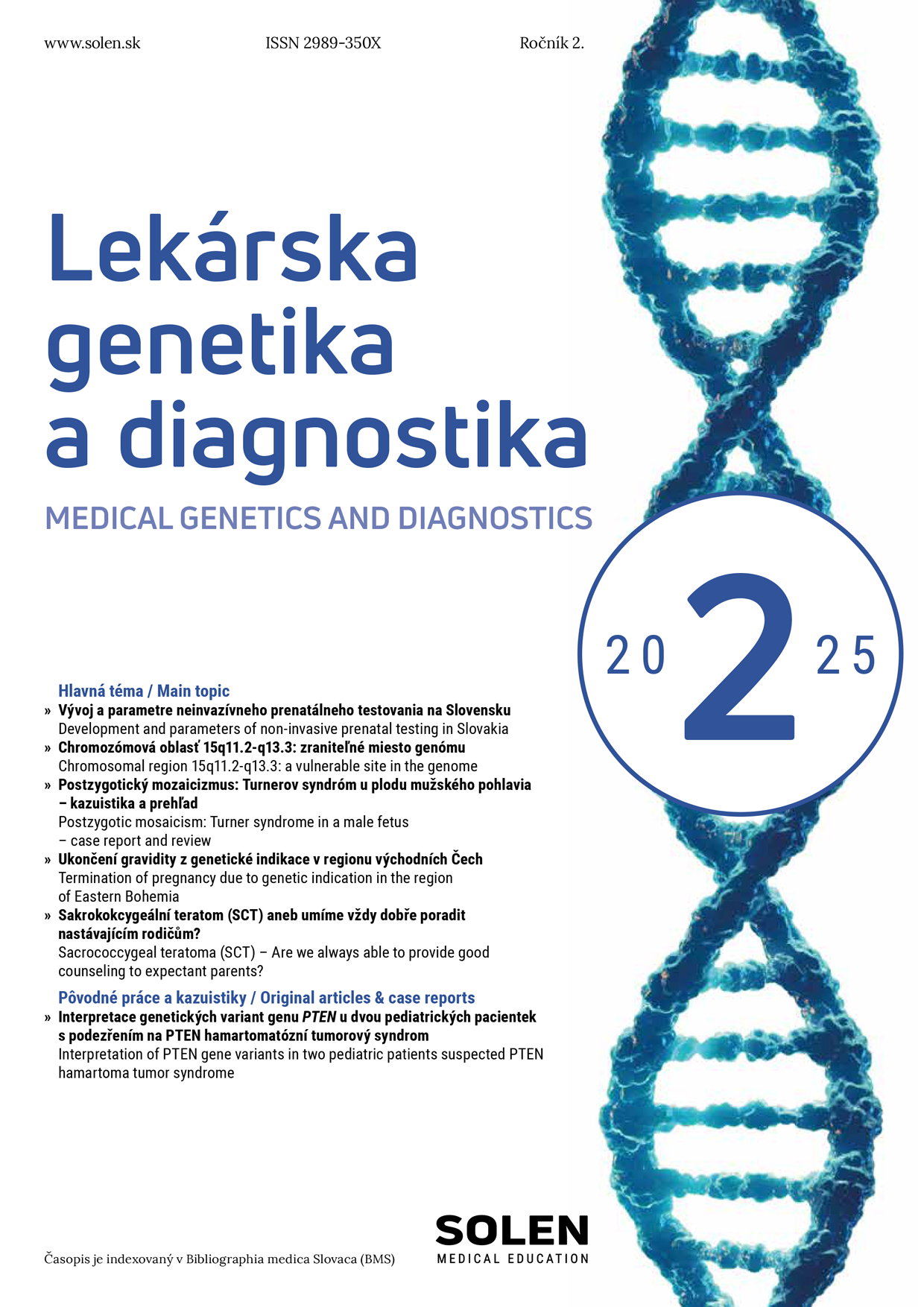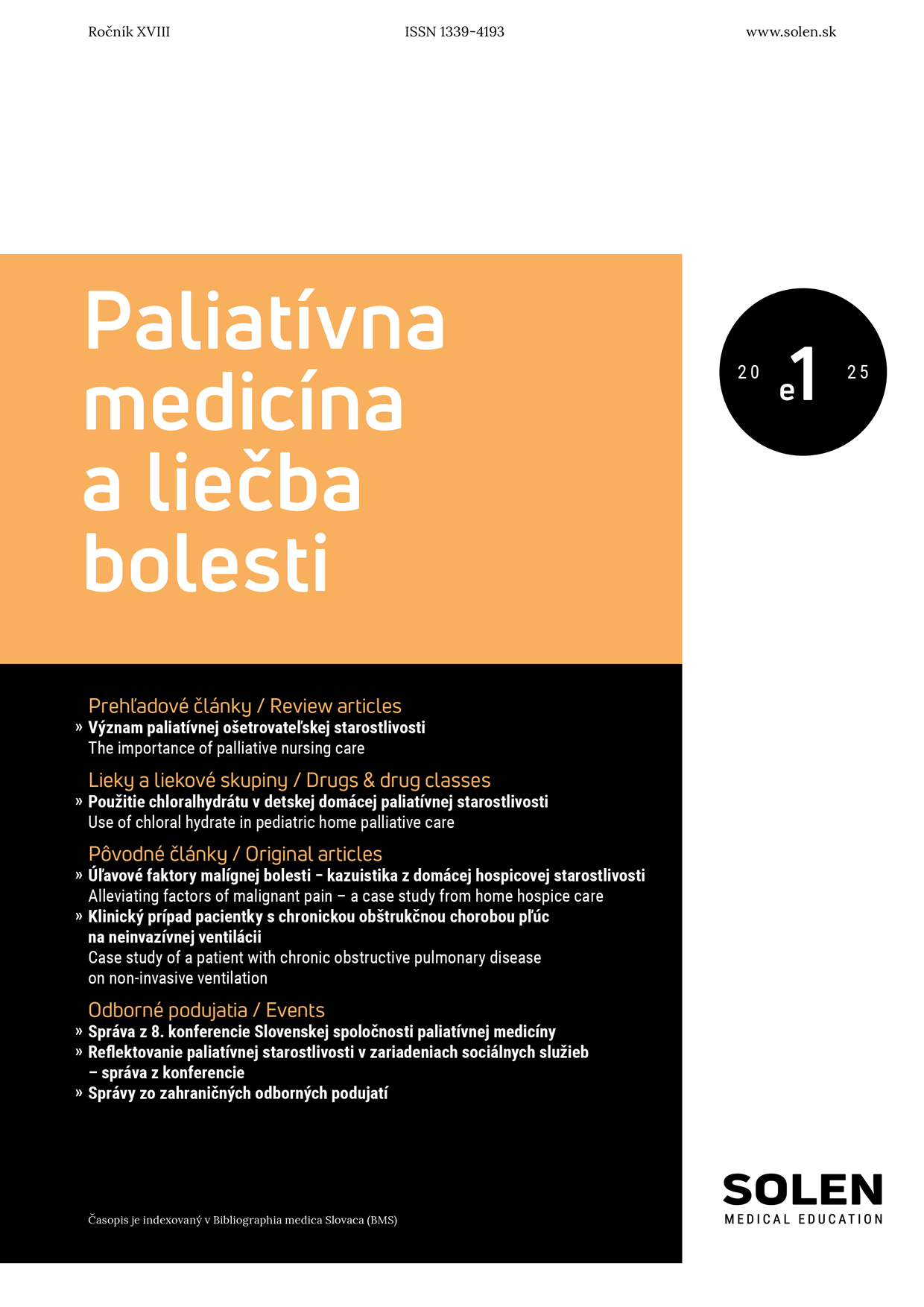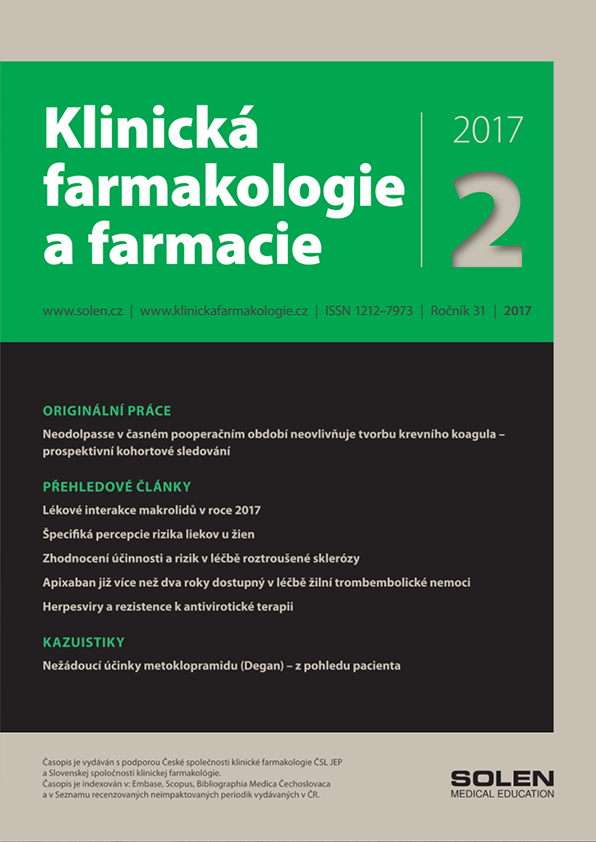Manuscript must be submitted in electronic format via email to: dubravcikova@solen.sk and redakcia@solen.sk. Submission of a printed manuscript is not required.
The Editorial team reserves the right to make minor stylistic adjustments to the text without consulting the author, who will be informed during the proofreading process. The editorial team also reserves the right to reject texts that do not align with the journal's concept or have not been approved through the peer review process. If necessary, the author's consent will be sought to shorten the manuscript. In case of any formal deficiencies, the manuscript will be returned to the author for revision.
The editors team reserve the right to self-manage the inclusion of unsolicited manuscripts that have passed the peer review process.
Given the journal's practical focus, manuscripts should be written in a clear manner, emphasizing the practical application of the provided information in clinical practice.
Authors and co-authors are required to familiarize themselves with the rules of publication ethics, available in full on the journal's website. When submitting an article for publication, the main author must send a written declaration to the editorial office stating that the entire authorial collective is aware of the publication ethics rules and that there are no impediments to publishing the article.
Legal relationships between the publisher and the author are governed by the provisions of the Copyright Act.
Editorial
Main Theme and Review Articles
The latest insights into etiology, pathogenesis, diagnosis, and treatment of diseases and disease groups. Maximum length is 8 pages. The article may include figures (graphs) or tables, with a maximum of 6. In the case of extensive topics, it is possible to divide the contribution into several parts, upon agreement with the editorial board. Emphasis should be places on the practical application of the article by psychiatrists and specialists from other fields interested in psychiatry.
Psychopharmacology
Drug profiles, indications, interactions, adverse effects of medications, the therapeutic use of specific drugs (agents) in clinical practice, clinical trials (course, study results). Maximum length is 5 pages.
Interdisciplinary Discussions
An interdisciplinary discussion, presenting different perspectives on a specific diagnosis or therapeutic approach from experts in various fields, discussing principles and issues of their collaboration.
Original Articles and Case Reports
Studies, specific treatment approaches, original observations, interesting cases from own practice. Maximum length is 7 pages including attachments and cited literature.
* Structure of an Original Article: abstract, keywords, introduction, material and methods or patient group and methods, results, discussion, conclusion, literature.
* Structure of a Case Report: abstract, keywords, introduction, description of the case (case report), discussion, conclusion, literature. The article should include information on why the case report deserves publication.
Outpatient Psychiatry
News, updates, and practice recommendations.
Psychotherapy
Psychotherapeutic approaches, their application in practice, own cases – case reports.
In Brief
Diagnostics and therapy presented in tables and schemes with emphasis on clarity and practical application of the given information.
Information and Comments
Reactions to review articles, interesting topics from foreign press, reviews, presentation of interesting projects, studies, observations from domestic and foreign professional literature, proceedings, comments, contributions about ethical and social issues.
Professional Events
Reports and observations from professional (domestic and foreign) events providing specific information, practical outputs, notes for practice, guidelines. Maximum length of the contribution: 3-4 pages.
Law in Psychiatry
Legal issues – their impact on therapeutic practice, current legal regulations. Maximum length is 3-5 pages depending on the nature of the contribution.
Online Supplement
* Articles undergo professional peer review and proofreading.
* All published solicited articles are honored.
* Articles are provided for review to advertising partners.
Contributions must be submitted with the required particulars, always in electronic form, via email or on a CD to the publisher's address. Submission of manuscripts in printed form is not required. The editorial team reserves the right to make minor stylistic adjustments to the text without consulting the author, who will be informed during the proofreading process. The editorial team also reserves the right to reject texts that do not fit the concept of the journal or have not been approved through the peer review process. If necessary, the author's consent will be sought for shortening the manuscript. Manuscripts with formal deficiencies will be returned to the author for revision.
** The Editorial Board reserves the right to manage the inclusion of unsolicited manuscripts that have undergone the peer review process. Given the practical focus of the journal, we kindly request that contributions be written comprehensibly, with an emphasis on the practical application of the provided information in clinical practice.
** Both the author and co-authors are obliged to familiarize themselves with the rules of publication ethics, which are available in full on the journal's website. When submitting the article for publication, the main author must send a written statement to the editorial team stating that the entire authorial collective is aware of the publication ethics rules and that there is no impediment to publishing the article.
Legal relationships between the publisher and the author are governed by the provisions of the Copyright Act.
Bibliographic references in the text should be indicated by numbers in round brackets and in the order they are first cited (not alphabetically). Subsequent references to the same source are indicated by the same number as the first mention.
When listing references at the end of the text, include up to 3 authors' names. For more than 3 authors, list the first 3 authors followed by the abbreviation et al.
When citing authors in the text itself (e.g., Culine et al. compared...), consistently use the "et al." abbreviation throughout the text and in the list of references. Also, provide a reference to the list of references after the cited author (e.g., Culine et al. (15) compared...).
Avoid references to abstracts, unpublished observations, and personal communications. Prefer recent citations (from the last 3 years).
The formatting of bibliographic references should adhere to the citation style used in the MEDLINE/PUBMED databases.
Examples of citing a monograph:
1. Stoler RJ. Sex and gender. London, UK: Hogarth; 196B.
2. Brüne M. Evolučná psychiatria (Pôvod psychopatológie). Trenčín, Slovakia: Vydavateľstvo F; 2012.
** Examples of citing a chapter in a book or a contribution in a conference proceedings:**
1. Vevera J. Komunikace s agresivním pacientem. In: Ptáček R, Bartůněk P. Etika a komunikace v medicíně. Praha, Czech Republic: Grada; 2011:381-387.
2. Zucker KJ. Gender identity disorders. In: Wolfe D, Mash E, eds. Behavioral and emotional disorders in adolescent. New York, NY: Guilford; 2006:535-562.
** Examples for citing an article from a journal:**
1. Dragašek J, Líšková S. Zmeny metabolických parametrov pri liečbe ziprasidónom. Psychiatr. prax. 2011;12(2):69-74.
2. Reck K, Stehle E, Reinig K, et al. Maternity bluses as a predictor of DSM-IV depression and axiety disorders in the first three months postpartum. J Affect Disord. 2009; 113(1−2):77-87.
** Example of citing an electronic article:**
1. Rasmussen HN, Scheier MF, Greenhouse JB. Optimism and physical health: a meta-analytic review [online]. Ann Behav Med. 2009;37(3):239-256. Available from: http://link.springer.com/article/10.1007/s12160-009-9111-x. Accessed August 27, 2009.
For more detailed instructions on creating citations and bibliographic references, visit: www.psychiatriapreprax.sk


